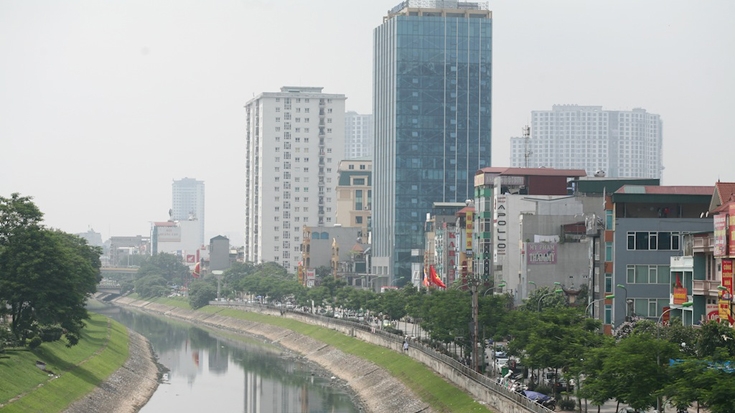• Since 1998, Vietnam has made important strides in the wastewater sector:
- In the past 10 years, average annual investment for the sanitation sector was $150 million, or 0.45 percent of the country’s annual GDP.
- As of 2012, 17 municipal wastewater plants had been constructed and 32 more are being designed or under construction.
- Access to toilets stands at 94 percent, with 90 percent of households using septic tanks as a means of on-site treatment.
- Sixty percent of households dispose of wastewater using a public sewerage system.
• Despite these gains, the sanitation sector needs to address critical issues:
- Although 60 percent of households dispose of wastewater through a public sewerage system, much of this goes to the drainage system with only 10 percent of the wastewater treated.
- While 90 percent of households dispose wastewater to septic tanks, only 4 percent of the septage is treated.
- Cost recovery of the capital, operation and maintenance costs of the wastewater systems is generally low.
- Wastewater enterprises have limited autonomy to manage operations and undertake system development.
- Estimated economic losses resulting from poor sanitation is $780 million per year or 1.3 percent of GDP.
- Financing needs are still very high, estimated at $8.3 billion for sewerage services to an estimated urban population of 36 million by 2025.
• Recommendations:
To National Policy Makers:
- Establish a national strategy applying integrated water resource management principles.
- Develop appropriate financing policies and mechanisms for the sanitation sector for both investment and operation and maintenance.
- Develop policies to address utility reform of the sanitation sector.
- Develop policies to encourage public-private partnerships and private sector participation.
- Allow some flexibility in the application of different treatment standards depending on receiving waters.
To Local Government and Local Sanitation Service Providers:
- Adopt a strategic sanitation planning approach at the city level.
- Promote efficient institutional and regulatory arrangements at the local level.
- Adopt centralized or decentralized wastewater systems depending on the local situation.
- Select appropriate wastewater treatment technologies.
- Ensure house connections are an integral part of wastewater system development.
- Prepare a roadmap to increase revenue and achieve cost recovery.
- Develop the capacity of local stakeholders.
- Increase awareness of sanitation service customers to promote behavior change.

